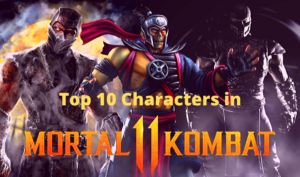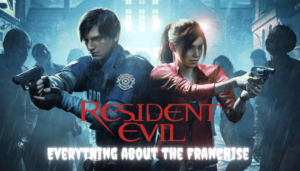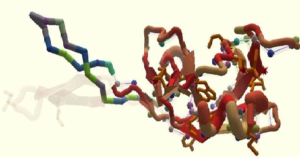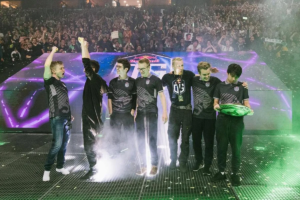Ah…Counter Strike 1.6 or as is popularly known as CS 1.6 or simply Counterstrike, the OG of all first-person, competitive shooters was(read: is) one of the games that revolutionized the world of ESports and competitive gaming. With its high skill ceiling, hardcore, and unforgiving game mechanics, and heavy dependence of team-based strategic gameplay, CS is still regarded as one of the greatest games to have ever been made.
Backstory and a brief history of Counter Strike 1.6
CS saw its inception as a free downloadable modification(mod) to the Half-Life’s engine GoldSrc. It was developed by two final semester students Minh “Gooseman” Le and Jesse Cliffe in 1999. According to them, initially, they struggled to find an audience for the mod, not even play testers. So, released the mod out to the public only to see it blow up. The allure of the sophistication of the game mechanics and the unique setting of a counter-terrorist(CT) v/s terrorist setting resulted in a rapid growth in the player base in a very short interval of time.
Such a Counter Terrorists v/s Terrorists strategic, team-based, multiplayer theme hadn’t been explored much until then with the notable exception of Rainbow Six. According to Le and Cliffe, they had the option of using other game engines like Quake and Unreal but none of them could provide the game with the sophisticated realism that he’d envisioned for it.
Most of the alterations to the original game was done by Le and Cliffe on the suggestions of the player community based on an open discussion that Cliffe had with them on the game’s website. As a matter of fact, all of the levels that were added to the game were community submissions. Le and Cliffe simply picked the ones they liked and added them to the game, a ritual that is followed by Valve to this date. This also helped the duo generate revenue from the ads that they hosted on the website to further the development of the game.
Sometime in 2000, around the time the Beta 5 was released, Valve bought the Countersrike intellectual property(IP) and hired Cliffe and Le to work for them and continue the game’s development. In September 2000, Valve released the official non-beta version of the game.
Gameplay of Counter Strike 1.6
If you have ever played counter strike(I don’t know why else you’d be reading this article), you can pretty much skip this section because not much has changed in the core mechanics of the game since its inception.
As stated before, Counter strike 1.6 made use of some revolutionary game mechanics which also steepened the learning curve of the game. It weeded out non-serious players and attracted strategic like-minded players who could work as a team. The game itself was a first-person shooter wherein the player could join either the Terrorists or the Counter-Terrorists(or the Spectators if you’re an admin or a troll) each of whom spawned simultaneously with each round start.
The player could choose from 8 different player models depending on their chosen team to spawn with and each player only spawned with a default pistol(with limited ammunition) and a knife. Now, depending on the chosen game-mode, each team could win the round by completing the required objective(or preventing it) and/or eliminating the enemy team. The most common game-modes were –
1. Bomb Defusal –
The terrorists were assigned with detonating a bomb, within a stipulated time, at any of the specified bomb sites and the counter-terrorists were tasked with preventing the said detonation or defusing the bomb(if planted) within a limited amount of time. If the time ran out without any bomb plant, it would result in a CT win.
2. Hostage Rescue
The counter-terrorists were tasked with escorting hostage(s), held captive by the terrorists, to safety. If the Counter Terrorists failed to rescue the hostage(s) in time, it would result in a Terrorists win
3. Assassination –
In this game-mode, one of the CTs would act as a VIP armed with a non-upgradable USP and with an enhanced Kevlar protection which the other CTs had to escort to safety. The terrorists were assigned with assassinating said VIP within the stipulated time. If the CTs failed to escort the VIP to safety within the limited time, it would result in a T win.
One of the most fundamental features of Counter strike is the simple yet elegant in-game economy system. Each team would start off with $800 and each win/kill/failure/hostage rescue would result in the player/team being awarded some money. The players could buy weapons, grenades, and/or kevlar with that money during the “freeze-time” before the commencement of each round. This economy system raised the skill ceiling even higher because it required the players to manage their own economy as well as the team economy with the judicious purchase of weapons or equipment.
The other fundamental feature of the game was the use of the “one-shot headshot” system wherein players without a kevlar helmet could be killed with a single shot to the head with any weapon of any caliber. However, using a kevlar helmet provided the players with protection from single-shot headshots from small caliber weaponry by the opposing team.
Other than that, the game also featured a HUD system that displayed the players’ health, ammo, weapon, in-game map, crosshair, and damage indicator. The game also had a scoreboard system that displayed the players’ score, ping, kills, deaths, etc.
The game mechanics were unforgiving with each player having a single life and no health-regeneration system. A few well-placed bullets or knife stabs/slashes could kill a player who would then have to spectate till the round ended. This forced the players to be diligent in their enemy engagements and fall-off when required and was not for the casual players seeking to respawn on every death. Although one could rely on their own skills to play the game, the game mechanics heavily incentivized teamplay and relying on strategic gameplay.
The combination of the aforementioned game mechanics raised the skill bar of the game significantly and resulted in a steep learning curve with easy basics and extremely difficult-to-learn advanced mechanics. However, this also made the game extremely addictive because a player could see visible improvements in their skills(pwning n00bs) with increasing practice-times.
Also, the latest version of Counter Strike 1.6 features 25 official maps and innumerable custom maps from the Steam Workshop.
Anti-cheat Technologies
After the developers of PunkBuster, an anti-cheat program, stopped supporting CS and Half-Life because of the lack of support from Valve, Valve started to develop a new long-term anti-cheat solution to dissuade the use of client-sided cheats(aimbot, wallhacks, etc) as executables. This resulted in the birth of Valve Anti-Cheat(VAC) which saw its first release with Counter Strike 1.6 in 2002.
The initial version of the program banned a player instantly if a cheat was detected and the player had to wait for two years to have his/her account unbanned. Since the second version of the program was implemented, VAC initiated a delayed ban when it identified a cheater.
The logic behind the implementation of said “delayed bans” was that if a certain executable was coded in such a way as to bypass VAC, it would proliferate among the “cheating community.” The delayed ban could then be used to identify and weed out as many cheaters as possible. CS also used a kick/ban system which would allow players to kick or ban another player displaying unscrupulous behaviour. However, as one could imagine, this system has been misused heavily
Release
Counterstrike was originally published by Sierra Game Studios and was bundled along with Opposing Force multiplayer, Team Fortress classic, the Wanted, Half Life: Absolute Redemption, and Firearms mods.
On August 31, 2000, the game was officially released by Valve as a retail product and also as a mod for Half-Life.
Reception
The game, upon its release, received highly positive reviews from critics and users alike. The global retail sales of Counterstrike surpassed 250,000 copies by July 2001 and touched 1.5 million copies by December 2003. Almost 550,000 copies of the game were sold in the United States itself resulting in a net revenue of $15.7 million by August 2006. The game was the US’s 22nd best selling computer game upon its release in November 2000 and August 2006.
One notable exception to the game’s success was the ban of game in Brazil owing to a federal court order in January 2008. However, the ban order was rescinded by another federal court order in 2009 and the game has been sold in Brazil since then.
Esports
There were a lot of things that the developers did right that resulted in the game’s extended shelf period and longevity. But, the one which probably had the largest impact was ESports and professional counterstrike. The high skill ceiling, the complex game mechanics prompted the creation of professional teams which consisted of players who’d mastered the game mechanics and were ready to play for higher stakes.
Tournaments for the game began since its release in 2000. The first major, hosted in Dallas, Texas, had a prize pool of $150,000. In 2004, ESEA started its first competitive counterstrike esports league with Counterstrike. Since then, the prize pools went on increasing and the stakes kept on getting higher. This resulted in companies investing heavily in said professional CS teams to solidify their presence in the up and coming esports gaming industry.
Competitive CS is now stronger than ever with the stakes also – higher than ever and shows no signs of slowing down as ESports has now become a viable career path for young CS players.
The evolution of Counter Strike 1.6
Since the release of the original Counterstrike, Valve released quite a few sequels to the game. In 2004, Valve released Counter Strike: Condition Zero, which saw the use of the GoldSrc engine again. Also in 2004, Valve released a remake of the original game – Counter Strike: Source, albeit with a much lower skill ceiling. It was the first game to utilise Valve’s Source engine.In 2012, Valve released the immensely popular Counter Strike: Global Offensive. CS:GO has also had a tremendous impact on the competitive scene of the game and its player base seems to be getting ever stronger. Even in February 2020, 8 years since its release, it became the highest played game on Steam for an entire week.
Stay upto dated with latest Counter Strike Global Offensive and other news on Myesportsglobe!






